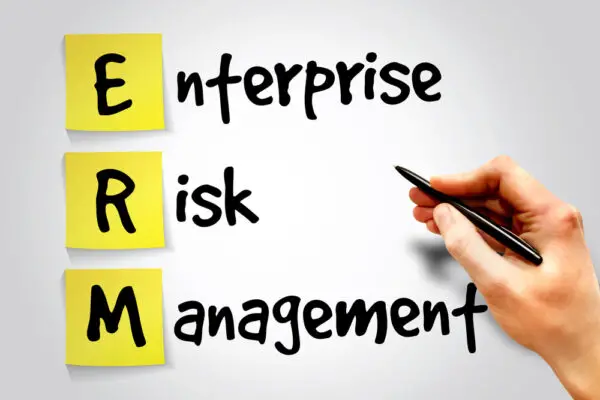Managing operational risks effectively is crucial to ensure long-term success and sustainability. Operational risks, stemming from various factors such as systems failures, human error, or external events, can significantly impact an organization’s performance and reputation.
To manage these risks effectively, businesses must rely on robust risk management processes, and one such essential component is operational risk key risk indicators (KRIs).
In this comprehensive guide, we will delve into the world of operational risk KRIs and explore their importance in effective risk management. Understanding and utilizing these indicators, organizations can proactively identify potential risks, monitor their impact, and take timely corrective actions to mitigate any adverse consequences.
We will discuss the relationship between operational risks and KRIs, highlight the process of identifying and developing appropriate KRIs, and outline strategies for implementing and monitoring these critical indicators. Furthermore, we will share insights on enhancing operational risk management with KRIs, incorporating industry best practices, and leveraging technology and tools for KRI management.
This blog post aims to comprehensively understand operational risk KRIs and their significance in successful risk management. We will explore the process of identifying and developing appropriate KRIs, discuss strategies for implementing and monitoring these indicators, and share insights on enhancing operational risk management using KRIs.
Our goal is to provide you with valuable knowledge and practical guidance on implementing operational risk KRIs effectively, thereby strengthening your organization’s risk management capabilities and promoting long-term success.
Importance of Operational Risk Management in Modern Businesses
In the current competitive landscape, operational risk management is more critical than ever for organizations striving to achieve and maintain success. With a multitude of potential risks originating from internal processes, systems, and external events, operational risk management allows businesses to identify, assess, and mitigate potential threats.
The Role of Key Risk Indicators in Effective Operational Risk Management
Key risk indicators (KRIs) is essential in effective operational risk management. These measurable factors enable organizations to track potential risks and their impact, allowing them to take timely corrective actions and make informed decisions.
- Early warning system: KRIs act as an early warning system, enabling organizations to identify potential risks and vulnerabilities before they escalate, allowing for proactive risk mitigation.
- Informed decision-making: KRIs provide valuable insights that help organizations make informed decisions regarding risk management strategies, resource allocation, and operational improvements.
- Performance monitoring: KRIs enable organizations to track and monitor the effectiveness of their risk management efforts, ensuring that the strategies implemented are delivering the desired results.
- Prioritization of risks: By assessing the potential impact and likelihood of various risks through KRIs, organizations can prioritize their risk management efforts and focus on addressing the most significant threats.
- Benchmarking and continuous improvement: KRIs allow organizations to benchmark their risk management performance against industry standards or competitors, driving continuous improvement and enhanced operational efficiency.
- Enhanced communication and transparency: KRIs provide a common language for communicating risks within an organization, fostering a culture of transparency and open dialogue among stakeholders.
- Alignment with organizational objectives: selecting KRIs aligned with an organization’s objectives and risk appetite, businesses can ensure that their risk management efforts contribute to achieving their strategic goals.
- Compliance and regulatory adherence: KRIs can help organizations monitor compliance with industry regulations, standards, and best practices, minimizing the likelihood of regulatory penalties and reputational damage.
- Resource optimization: KRIs enable organizations to allocate resources more efficiently by identifying areas with the highest potential risks and directing efforts towards those areas.
- Building a risk-aware culture: Using KRIs encourages organizations to develop a risk-aware culture where employees at all levels understand the importance of managing risks and taking responsibility for their actions.
Exploring the Connection Between Operational Risk and Key Risk Indicators (KRIs)
What is Operational Risk?
Operational risk encompasses the potential for losses or damages resulting from internal processes, systems, people, or external events that can negatively impact an organization’s performance, reputation, and financial stability.
Sources of operational risk can range from process inefficiencies and human errors to system failures, fraud, natural disasters, or regulatory non-compliance. Managing operational risks effectively is essential for organizations to ensure smooth operations and achieve their strategic goals.
Defining Key Risk Indicators
Key risk indicators (KRIs) represent measurable metrics that help organizations monitor the likelihood of operational risks and evaluate their potential impact. Acting as early warning signs, KRIs empower organizations to proactively identify, assess, and mitigate risks before they escalate and cause considerable disruptions.
Kris can encompass financial and non-financial aspects and should align with an organization’s risk appetite and strategic objectives.
Connecting Operational Risk and KRIs,
The connection between operational risk and KRIs lies in their shared aim of enhancing an organization’s risk management capabilities. While operational risks emphasize identifying, assessing, and mitigating potential threats, KRIs provide a means to monitor and track these risks. This enables organizations to make well-informed decisions and implement timely corrective actions.
Organizations adopting and monitoring KRIs can gain valuable insights into their operational risk exposure, prioritize risk management efforts, and proactively address potential threats.
The synergy between operational risk and KRIs ensures that organizations can effectively manage risks, optimize operational efficiency, and protect their reputation in the market.
Identifying and Developing Operational Risk KRIs
Importance of Selecting Relevant KRIs
Selecting relevant key risk indicators (KRIs) is crucial for organizations to manage operational risks effectively. Relevant KRIs provide valuable insights into potential threats and vulnerabilities, allowing organizations to proactively identify, assess, and mitigate risks before they escalate and cause disruptions.
Focusing on the most pertinent KRIs helps organizations prioritize their risk management efforts and allocate resources efficiently, ultimately safeguarding their performance, reputation, and financial stability.
Criteria for Effective KRIs
To ensure the effectiveness of KRIs in managing operational risks, organizations should consider the following criteria when selecting and developing their KRIs:
- Relevance: KRIs should directly relate to the operational risks that the organization faces, providing meaningful insights into potential threats and vulnerabilities.
- Quantifiable: KRIs must be measurable, enabling organizations to track and compare their performance over time and against industry benchmarks.
- Timely: KRIs should provide real-time or near-real-time information, allowing organizations to address risks proactively.
- Simple and understandable: KRIs must be easily understood by all stakeholders, promoting a culture of transparency and open communication.
- Aligned with organizational objectives and risk appetite: KRIs should support the organization’s strategic goals and align with its risk tolerance levels.
Examples of Common Operational Risk KRIs
Some common operational risk KRIs that organizations can monitor include
- Employee turnover rate: High turnover may signal employee satisfaction or organizational culture issues, potentially increasing operational risks.
- Number of cybersecurity incidents: Monitoring cybersecurity incidents can help organizations assess their vulnerability to cyber threats and prioritize security measures.
- Error rates in critical processes: Keeping track of error rates can reveal inefficiencies in internal processes, which may contribute to increased operational risks.
- Regulatory compliance violations: Tracking compliance violations helps organizations identify areas where improvement is necessary to avoid fines and reputational damage.
- Customer complaint rate: A high rate of customer complaints may indicate product or service quality issues, potentially leading to customer dissatisfaction and revenue loss.
Implementing and Monitoring Operational Risk KRIs
Integrating KRIs into Risk Management Processes
Integrating key risk indicators (KRIs) into existing risk management processes is crucial for organizations to monitor and control operational risks effectively. This involves identifying and incorporating the most relevant KRIs into regular risk assessments, performance measurement, and reporting activities. By embedding KRIs into the risk management framework, organizations can ensure a more comprehensive and proactive approach to mitigating operational risks, ultimately enhancing their resilience and ability to adapt to changing business environments.
Setting Risk Thresholds and Monitoring KRIs
Establishing risk thresholds for KRIs is critical in effectively managing operational risks. Risk thresholds serve as benchmarks for acceptable levels of risk exposure and help organizations prioritize their risk mitigation efforts.
Organizations should set risk thresholds based on their risk appetite, strategic objectives, and industry standards. Regularly monitoring KRIs against these thresholds enables organizations to track their risk exposure and identify areas where proactive action is needed to prevent potential disruptions or losses.
Utilizing KRIs for Proactive Risk Mitigation
KRIs play a vital role in proactive risk mitigation by providing timely and actionable insights into operational risk exposure. By closely monitoring KRIs, organizations can identify trends, patterns, and emerging risks, enabling them to take preventive measures and address potential issues before they escalate.
Furthermore, organizations can use KRIs to improve risk mitigation strategies, refine risk management processes, and allocate resources more effectively. This proactive approach to operational risk management helps organizations reduce the likelihood of negative outcomes and enhances their ability to achieve their strategic objectives.
Organizations can better manage their operational risks and improve their overall business performance by integrating KRIs into risk management processes, setting risk thresholds, and utilizing KRIs for proactive risk mitigation.
Enhancing Operational Risk Management with KRIs
Strategies for Continuous Improvement
Continuous improvement is crucial to effective operational risk management. Organizations can regularly evaluate and refine their key risk indicators (KRIs) to ensure they remain relevant and aligned with changing business environments and evolving risks.
Strategies for continuous improvement may include soliciting feedback from stakeholders, analyzing performance trends, and reviewing the effectiveness of existing risk mitigation measures.
Incorporating Industry Best Practices and Benchmarking
Implementing industry best practices and benchmarking KRIs against industry standards can significantly enhance an organization’s operational risk management. Adopting proven methodologies and learning from the experiences of others in the industry, organizations can refine their risk management practices and improve the effectiveness of their KRIs.
Benchmarking KRIs against industry peers allows organizations to identify gaps in their risk management processes and develop strategies to address potential vulnerabilities. Incorporating best practices and benchmarking helps organizations stay ahead of emerging risks and maintain a competitive edge in their respective industries.
Leveraging Technology and Tools for KRI Management
Utilizing technology and tools for KRI management can greatly improve the efficiency and effectiveness of operational risk management. Advanced analytics, artificial intelligence, and machine learning can help organizations analyze vast amounts of data, identify trends and patterns, and predict potential risks more accurately.
Additionally, specialized risk management software and platforms can streamline the process of tracking, monitoring, and reporting KRIs, enabling organizations to gain real-time insights into their risk exposure. Embrace technology and tools can better manage their operational risks and make more informed decisions to support their strategic objectives.

Conclusion
Effective managing operational risks is crucial for organizations to maintain resilience, protect their reputation, and achieve their strategic objectives. Operational risk key indicators (KRIs) play a vital role in this process by providing valuable insights into potential threats and vulnerabilities.
Implementing KRIs for operational risk management can lead to significant benefits for organizations, including improved decision-making, increased resilience, and enhanced competitiveness.
Adopt a proactive approach to risk management and leverage KRIs organizations can better navigate the challenges they face in today’s complex business landscape.
Therefore, it is highly recommended that organizations prioritize developing and implementing KRIs as a key component of their overall risk management strategy. Embracing KRIs can help organizations effectively manage operational risks and ultimately achieve greater business success.

Chris Ekai is a Risk Management expert with over 10 years of experience in the field. He has a Master’s(MSc) degree in Risk Management from University of Portsmouth and is a CPA and Finance professional. He currently works as a Content Manager at Risk Publishing, writing about Enterprise Risk Management, Business Continuity Management and Project Management.




